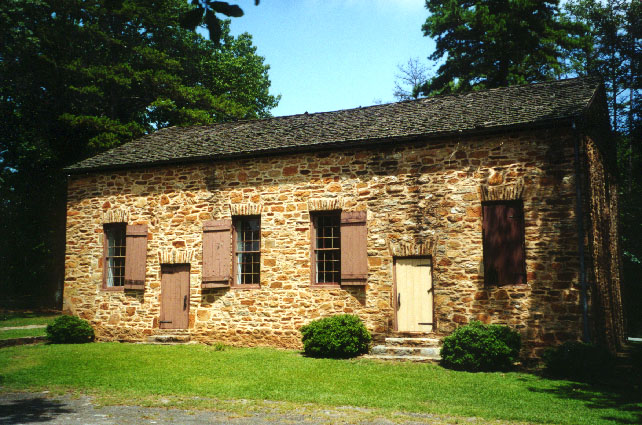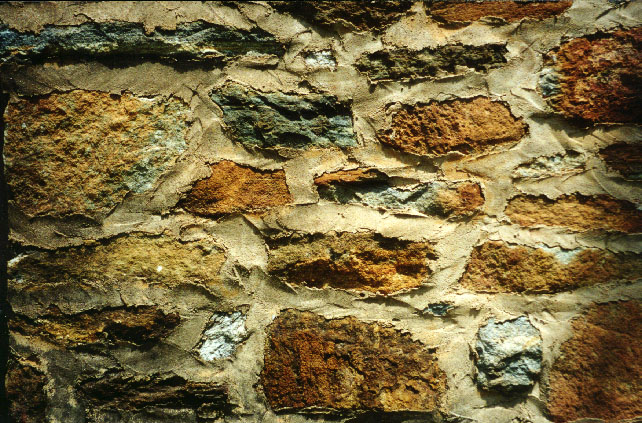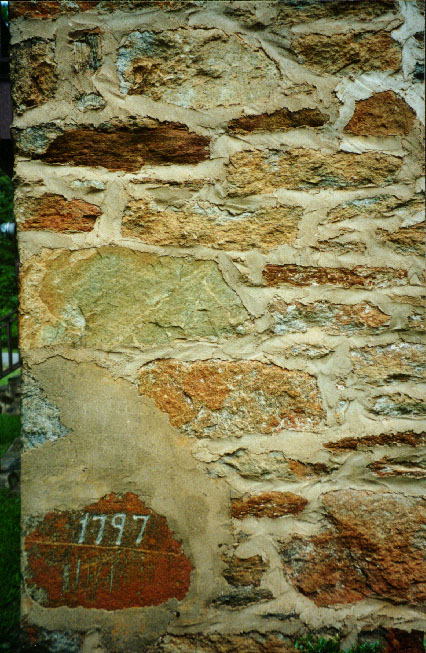
Local accounts claim that the church was built of "stones were gathered by farmers from their fields". The diversity of metamorphic rock types, mostly gneisses, visible in the walls supports that claim (see below). Most of the Piedmont consists of a bewildering array of high-grade metamorphic rocks, and the builders seem to have sampled it well.


The restorers found the weathered field stones sufficiently hard to work with that they almost covered them all with mortar; the images above show that the surface is as much mortar as stone. Comparison with Lumpkin House in Athens, Georgia, shows that the restorers' frustrations were not unusual for anyone working with uncut pieces of Piedmont gneiss. The irregularity of the shapes of chunks of gneiss almost inevitably leads to a mortar-rich wall like that in the Old Stone Church. On the other hand, Washington Hall at West Point, New York, shows that cut gneiss can provide geometrically convenient building stone requiring proportionately little mortar - if one cuts the gneiss.